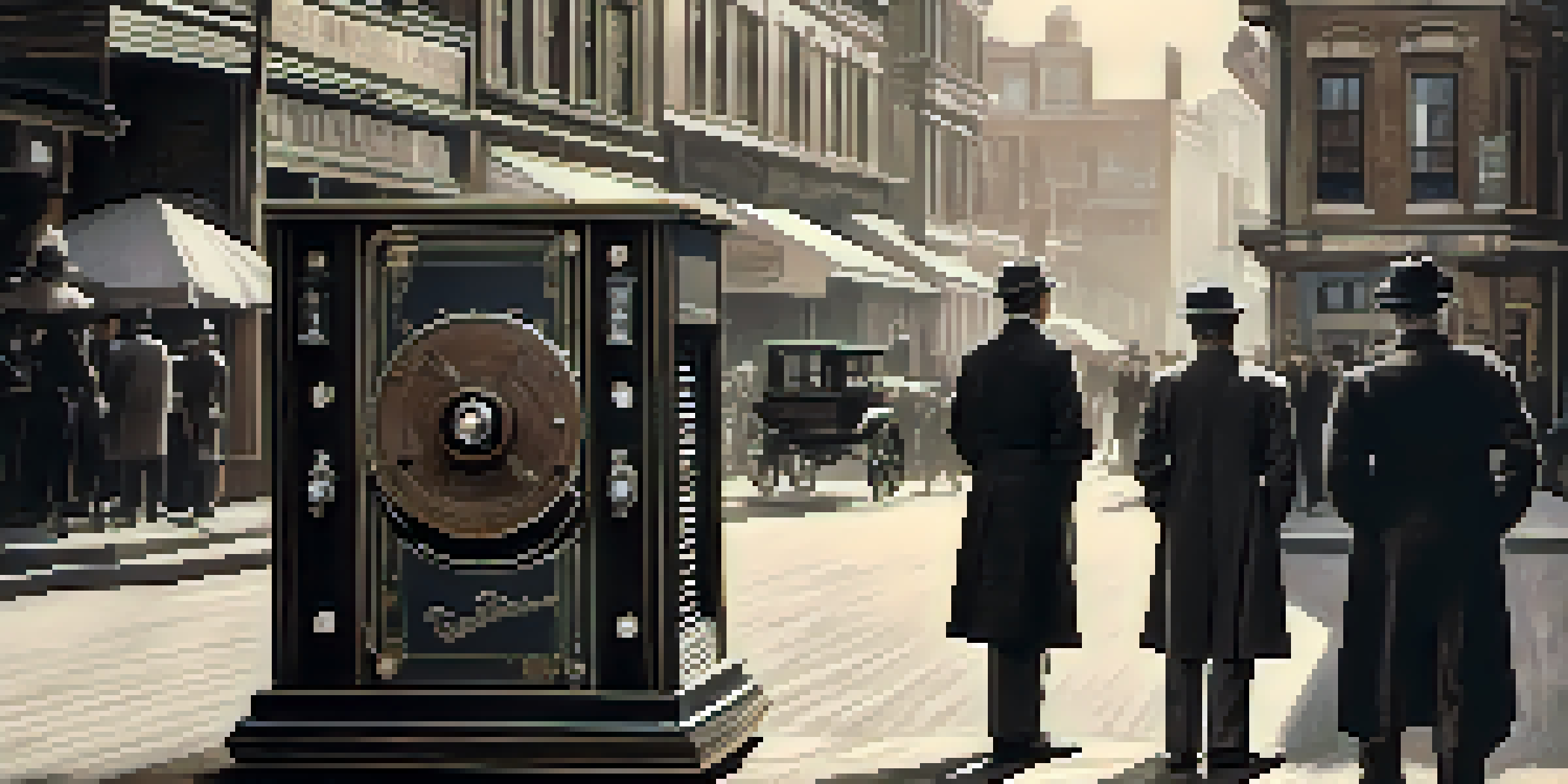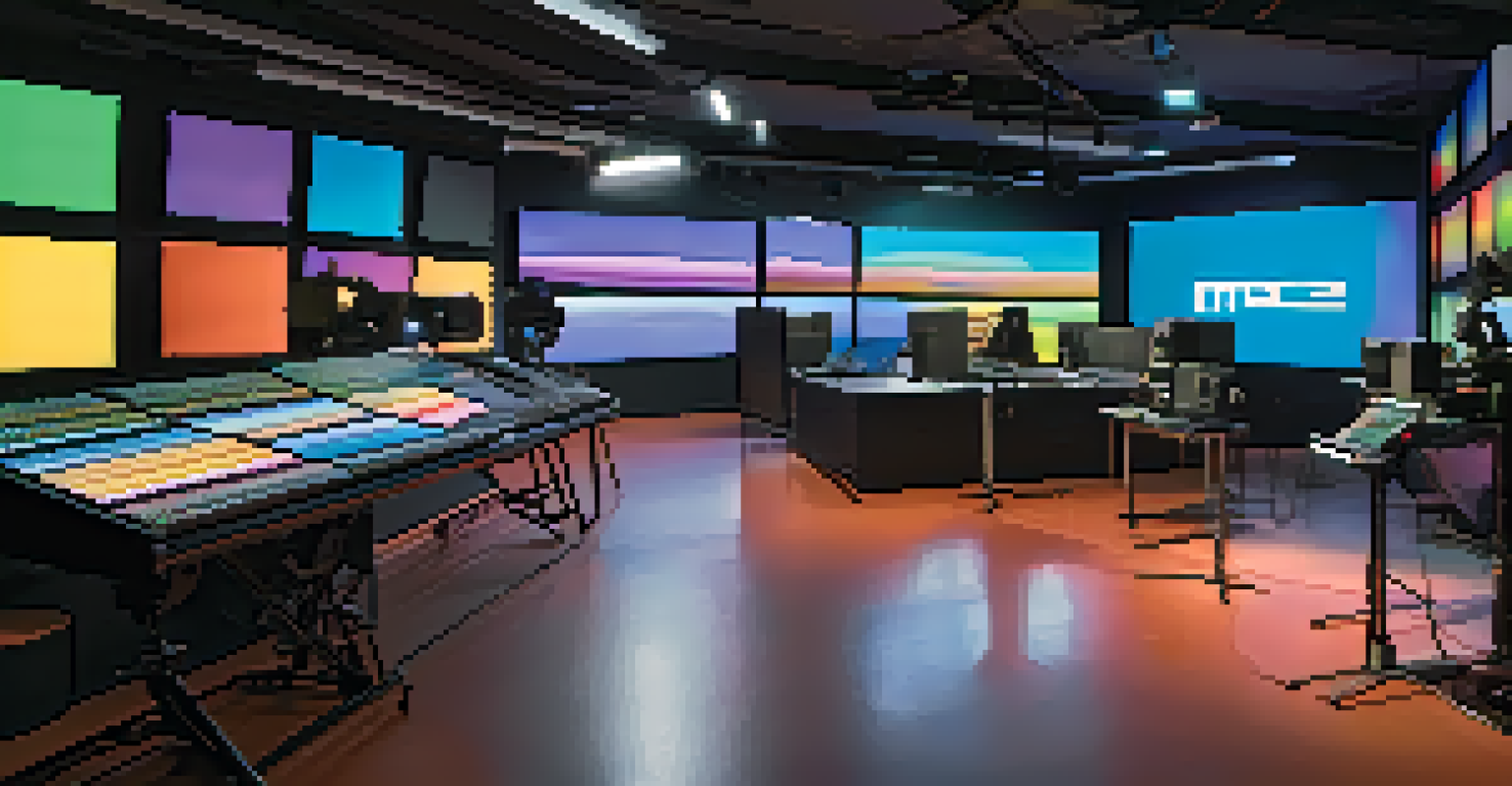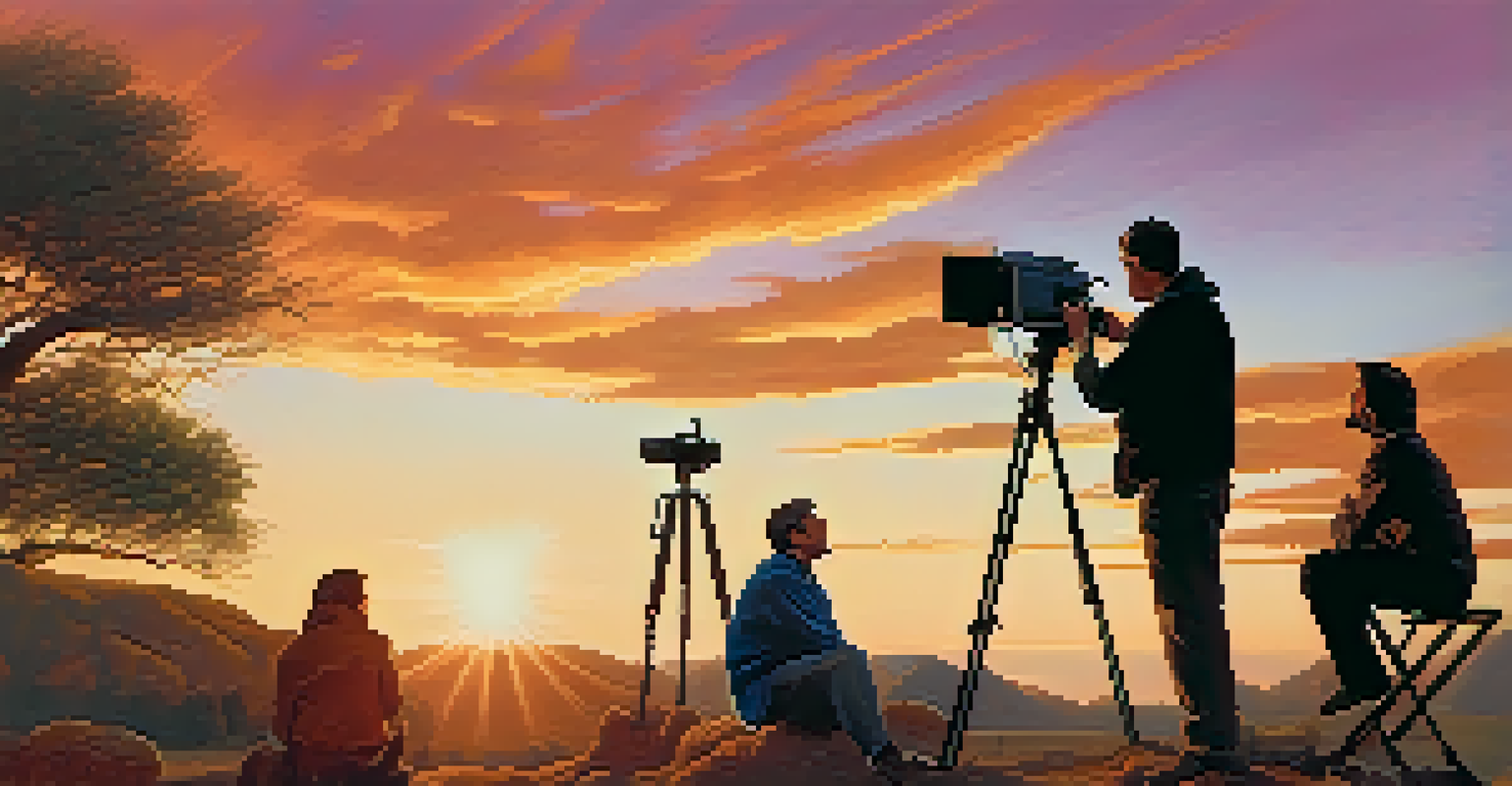The Evolution of Cinematography: Trends and Narrative Impact

The Roots of Cinematography: A Historical Perspective
Cinematography, at its core, is the art of capturing motion through a lens. It began in the late 19th century with inventions like the Kinetoscope, which paved the way for the moving image. Early filmmakers used simple techniques to tell stories, relying heavily on natural light and static shots.
Cinematography is infinite in its possibilities... much more so than music or language.
As technology advanced, so did the possibilities of visual storytelling. The introduction of color film in the 1930s allowed for more expressive narratives, bringing characters and settings to life in ways black and white film could not. This evolution marked a significant shift in how audiences experienced cinema.
Today, we can trace the lineage of cinematography from these humble beginnings to the sophisticated techniques used in modern filmmaking. Understanding this history helps us appreciate the intricate relationship between technology and narrative, which continues to shape the cinematic landscape.
Technological Advancements: Shaping Cinematic Language
The evolution of cinematography has been largely driven by technological advancements. From the invention of the handheld camera to the rise of digital cinematography, each new tool has expanded creative possibilities for filmmakers. For instance, the use of drones has revolutionized aerial shots, providing stunning visuals that were once impossible.

Moreover, advancements in editing software have transformed how cinematographers approach their craft. With tools like Adobe Premiere Pro and Final Cut Pro, filmmakers can manipulate footage in real-time, allowing for greater experimentation and flexibility. This change has led to more dynamic storytelling techniques that enhance audience engagement.
Cinematography's Historical Evolution
Cinematography has evolved from simple techniques in the late 19th century to sophisticated methods that enhance storytelling.
As technology continues to evolve, so does the language of cinema. Cinematographers today must not only master traditional techniques but also stay updated on the latest innovations to effectively communicate their stories visually.
The Rise of Aesthetic Trends: Visual Styles in Film
Every era of filmmaking has its distinct visual style, often shaped by cultural trends and technological capabilities. For instance, the 1970s saw the rise of gritty realism, with filmmakers like Martin Scorsese using natural lighting and handheld cameras to create an immersive experience. This aesthetic resonated with audiences, reflecting societal issues and personal narratives.
The camera is a very powerful instrument. It can take you anywhere, and it can make you feel deeply.
In contrast, the 1990s embraced a more stylized approach, with films like 'The Matrix' showcasing innovative visual effects and vibrant color palettes. These trends not only influenced the way stories were told but also set new standards for cinematic aesthetics, pushing the boundaries of creativity.
Today, we are witnessing the emergence of diverse visual styles that cater to varying tastes and narratives. From the muted tones of indie films to the vibrant worlds of superhero blockbusters, these aesthetic trends play a crucial role in shaping how we interpret stories on screen.
Narrative Techniques: How Cinematography Tells Stories
Cinematography is not just about capturing images; it's about telling stories. Techniques like framing, lighting, and camera movement all contribute to the narrative. For example, a close-up shot can evoke intimacy, drawing viewers into a character's emotional state, while wide shots can establish context and setting.
Moreover, the choice of color palettes and lighting can significantly impact the mood of a scene. Dark, shadowy lighting may create tension and suspense, while bright, soft lighting can evoke feelings of warmth and comfort. Understanding these techniques allows filmmakers to manipulate audience emotions effectively.
Technology's Impact on Filmmaking
Technological advancements, like digital tools and drones, have expanded creative possibilities, shaping modern cinematic language.
As audiences become more visually literate, filmmakers must thoughtfully consider how their cinematography choices enhance storytelling. This synergy between visual technique and narrative is what makes cinema a powerful medium for storytelling.
The Influence of Streaming Services on Cinematography
The rise of streaming services like Netflix and Amazon Prime has transformed the film industry, including its approach to cinematography. With more content being produced than ever before, filmmakers have the opportunity to experiment with diverse styles and narratives. This shift has led to a broader range of visual storytelling techniques.
Additionally, streaming platforms often prioritize unique and artistic visuals to stand out in a crowded market. Series like 'The Crown' and 'Stranger Things' have become known for their stunning cinematography, which plays a vital role in establishing tone and setting. This trend encourages filmmakers to push the envelope and explore new creative avenues.
As streaming services continue to shape the industry, the impact on cinematography will likely evolve. Filmmakers must adapt to these new platforms and their audiences, finding innovative ways to engage viewers through captivating visuals.
Cinematography’s Role in Social Commentary
Cinematography often serves as a powerful tool for social commentary, reflecting and critiquing societal issues. Through visual choices, filmmakers can highlight themes of injustice, inequality, and human experience. For instance, the use of stark contrasts in lighting can underscore the struggles of marginalized communities.
Films like 'Moonlight' and 'Parasite' utilize cinematographic techniques to explore complex social dynamics. The way a scene is shot can convey deeper meanings and provoke thought, encouraging audiences to engage critically with the narrative. This relationship between visual representation and social commentary is increasingly relevant in today's cinematic landscape.
Cinematography as Social Commentary
Cinematography serves as a powerful medium for social commentary, using visual choices to reflect and critique societal issues.
As filmmakers continue to address pressing societal issues, the role of cinematography in conveying these messages will only grow. The visual element serves not just to entertain but to inform and inspire change, reinforcing the power of storytelling in cinema.
The Future of Cinematography: Trends to Watch
Looking ahead, the future of cinematography is brimming with exciting possibilities. As technology advances, we can expect to see even more innovative tools and techniques that will redefine visual storytelling. Virtual reality (VR) and augmented reality (AR) are already making waves, allowing audiences to immerse themselves in narratives like never before.
Additionally, the trend towards more diverse and inclusive storytelling is likely to influence cinematographic styles. Filmmakers are increasingly drawing from a wide range of cultural perspectives, which can lead to unique visual interpretations and storytelling methods. This shift not only enriches the cinematic landscape but also provides audiences with a broader understanding of different experiences.

As we embrace these changes, it's essential to remain open to new ideas and techniques in cinematography. The future holds immense potential for creativity and innovation, ensuring that storytelling through film continues to evolve and resonate with audiences worldwide.